Security Clearances
A Guide To Australian Federal Government Security Clearances
As Australia strengthens its digital capabilities, with large investments in technology to support national security and technological advancement, the demand for skilled professionals with security clearances grow.
A Guide To Australian Federal Government Security Clearances
As Australia strengthens its digital capabilities, with large investments in technology to support national security and technological advancement, the demand for skilled professionals with security clearances grow.

What Are Security Clearances?
To protect sensitive information and critical systems, and ensure compliance with legal and policy requirements, security clearances guarantee only vetted and trustworthy individuals can access classified data and work on high-security projects. The security clearance process assesses an individual's suitability to access classified information or work in sensitive roles through rigorous and detailed checks on their personal and professional history in line with privacy laws. There are four levels of clearance, each corresponding to the sensitivity of the information handled:
- Baseline: For accessing protected-level information.
- Negative Vetting Level 1 (NV1): For accessing secret-level information.
- Negative Vetting Level 2 (NV2): For accessing highly classified information.
- Positive Vetting (PV): For handling secret-level information. Can also be referred to as TSPV (top secret positive vetting).
The higher the clearance level, the more sensitive the information the individual will manage and therefore the more rigorous the assessment.

What Are Security Clearances?
To protect sensitive information and critical systems, and ensure compliance with legal and policy requirements, security clearances guarantee only vetted and trustworthy individuals can access classified data and work on high-security projects. The security clearance process assesses an individual's suitability to access classified information or work in sensitive roles through rigorous and detailed checks on their personal and professional history in line with privacy laws. There are four levels of clearance, each corresponding to the sensitivity of the information handled:
- Baseline: For accessing protected-level information.
- Negative Vetting Level 1 (NV1): For accessing secret-level information.
- Negative Vetting Level 2 (NV2): For accessing highly classified information.
- Positive Vetting (PV): For handling secret-level information. Can also be referred to as TSPV (top secret positive vetting).
The higher the clearance level, the more sensitive the information the individual will manage and therefore the more rigorous the assessment.
The Role Of AGSVA
The Australian Government Security Vetting Agency (AGSVA) is responsible for overseeing the vetting process for all government departments. To obtain a security clearance, you must go through AGSVA process and individuals cannot apply for a security clearance independently, you must be sponsored by a government agency or official to initiate the process.
Eligibility For Security Clearance
To qualify for a security clearance, you must meet several criteria:
Citizenship: Only Australian citizens are eligible.
Detailed Background Check: The process extends far beyond a standard police check. Applicants must provide comprehensive details, including past addresses, references, tax records, and statutory declarations and more.
The purpose of this rigorous process is to assess personal qualities such as honesty, reliability, maturity, and loyalty to ensure you are trustworthy to access and work with classified data and information.
Processing Timeframes
The time it takes to obtain a security clearance depends on the level of clearance required:
- Baseline Clearance: Typically takes a few weeks.
- Negative Vetting (NV 1 & 2): Around 3-4 months
- Positive Vetting (PV): May take up to 12 months or more.
Delays can occur if applications contain errors or omissions, so accuracy is critical. Unfortunately, neither applicants nor employers can expedite the process, as there is no option for urgent approvals.
Securing a government security clearance is a detailed and time-consuming process, but it is a critical step for those pursuing careers in Australian Federal Government roles. Ensuring your application is thorough and accurate can help streamline the process and avoid unnecessary delays.
Support From Emanate Technology
With many years of experience in public sector recruitment, we’ve supported countless candidates as they navigate the Federal Government security clearance process, offering guidance to ensure a seamless experience.
While we’re not a government agency and cannot sponsor your security clearance, we can assist you in understanding the process and provide valuable advice and support along the way.
Got questions? Reach out to our team to learn more about Federal Government clearances and how we can help you.
The Role Of AGSVA
The Australian Government Security Vetting Agency (AGSVA) is responsible for overseeing the vetting process for all government departments. To obtain a security clearance, you must go through AGSVA process and individuals cannot apply for a security clearance independently, you must be sponsored by a government agency or official to initiate the process.
Eligibility For Security Clearance
To qualify for a security clearance, you must meet several criteria:
Citizenship: Only Australian citizens are eligible.
Detailed Background Check: The process extends far beyond a standard police check. Applicants must provide comprehensive details, including past addresses, references, tax records, and statutory declarations and more.
The purpose of this rigorous process is to assess personal qualities such as honesty, reliability, maturity, and loyalty to ensure you are trustworthy to access and work with classified data and information.
Processing Timeframes
The time it takes to obtain a security clearance depends on the level of clearance required:
- Baseline Clearance: Typically takes a few weeks.
- Negative Vetting (NV 1 & 2): Around 3-4 months
- Positive Vetting (PV): May take up to 12 months or more.
Delays can occur if applications contain errors or omissions, so accuracy is critical. Unfortunately, neither applicants nor employers can expedite the process, as there is no option for urgent approvals.
Securing a government security clearance is a detailed and time-consuming process, but it is a critical step for those pursuing careers in Australian Federal Government roles. Ensuring your application is thorough and accurate can help streamline the process and avoid unnecessary delays.
Support From Emanate Technology
With many years of experience in public sector recruitment, we’ve supported countless candidates as they navigate the Federal Government security clearance process, offering guidance to ensure a seamless experience.
While we’re not a government agency and cannot sponsor your security clearance, we can assist you in understanding the process and provide valuable advice and support along the way.
Got questions? Reach out to our team to learn more about Federal Government clearances and how we can help you.


